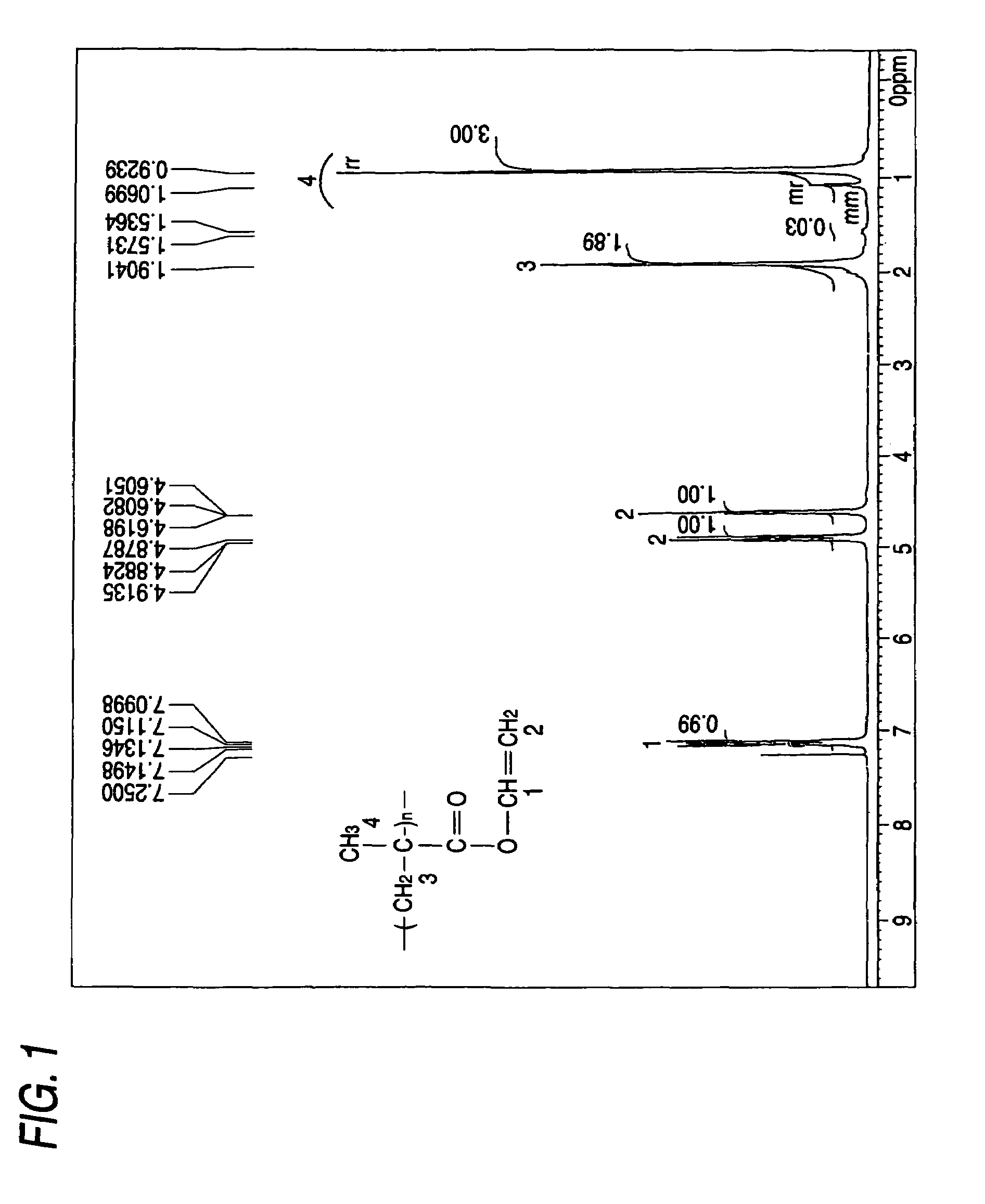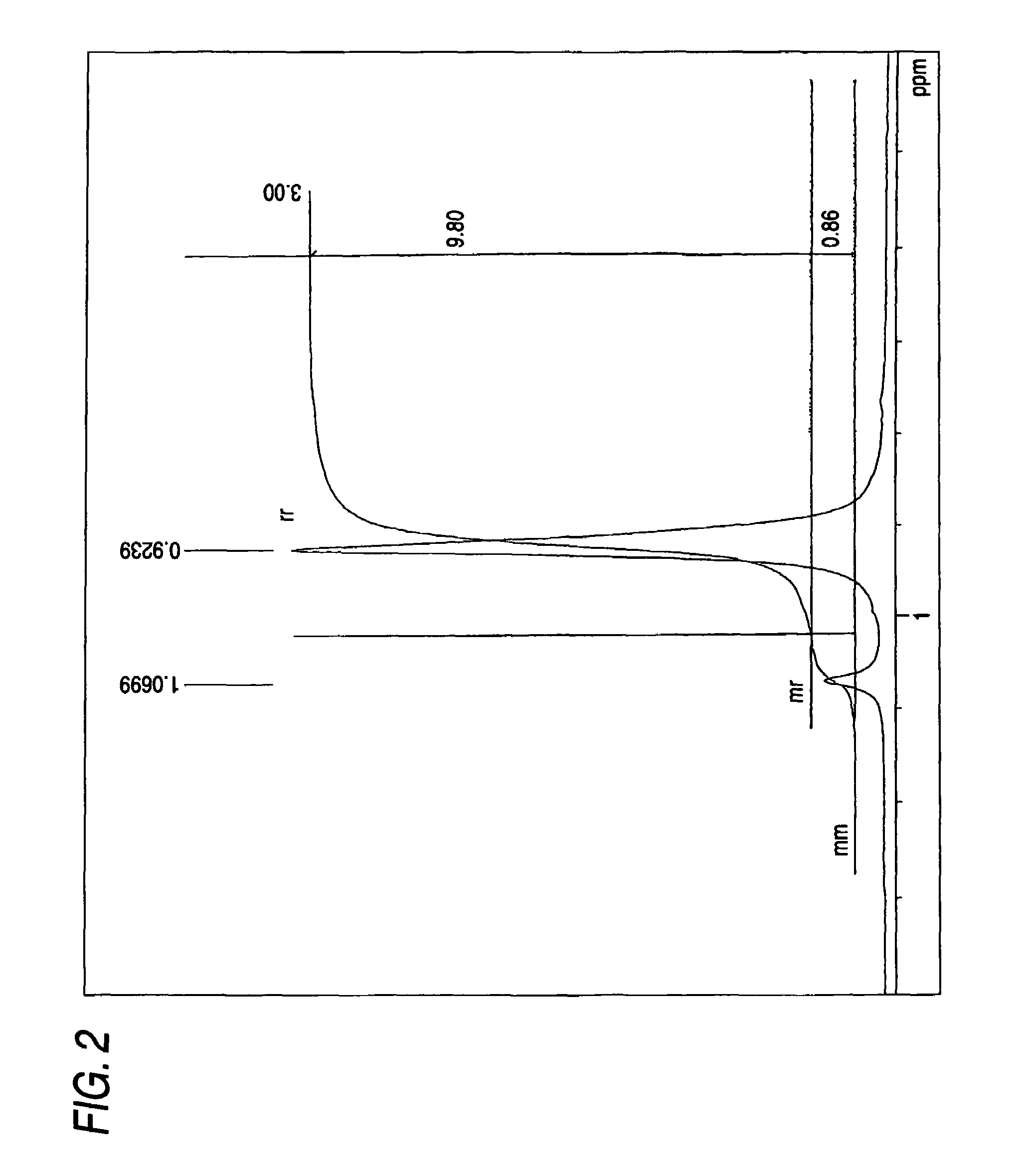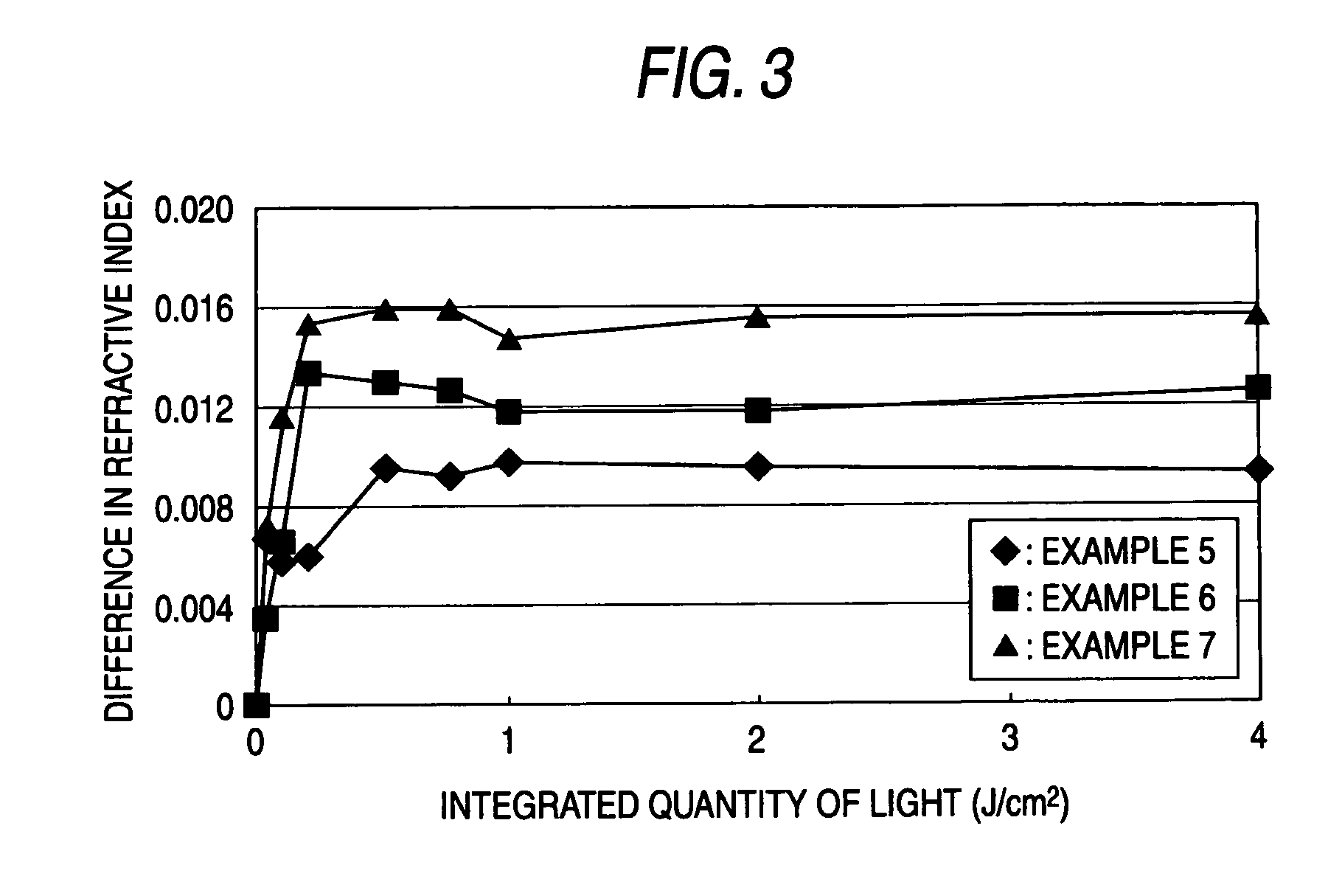Photochemically refractive-index-changing polymer, photochemically refractive-index-changing polymer composition, and method of refractive index regulation
a technology of refractive index and polymer, applied in the field of photochemical refractive index regulation, can solve the problems of impaired efficiency and insufficient transparency of optical devices produced by methods, and achieve the effects of improving efficiency, reducing the cost of optical devices, and excellent transparency
- Summary
- Abstract
- Description
- Claims
- Application Information
AI Technical Summary
Benefits of technology
Problems solved by technology
Method used
Image
Examples
example 1
(Synthesis of Catalyst)
[0103]A catalyst for anionic coordination polymerization was synthesized in the following manner.
[0104]Into a 1-liter flask the atmosphere in which had been replaced with argon were introduced 3.9616 g of SmI2 and 330 mL of tetrahydrofuran. Thereto was added, with stirring, 45.858 g of pentamethyl cyclopentadienylpotassium salt [(C5Me5)K]. This mixture was reacted at room temperature. Thereafter, the THF was removed under reduced pressure, and toluene was added to the residual solid matter. The supernatant was recovered and vacuum drying was conducted. Recrystallization of [(C5Me5)2Sm(THF)2] was then conducted with THF and hexane. In 60 mL of toluene was dissolved 2.5 g of this [(C5Me5)2Sm(THF)2]. Thereto was added 2.2 mL of triethylaluminum. This mixture was reacted with stirring. The resultant precipitate was removed and recrystallization was then conducted to obtain (C5Me5)2SmMe(THF).
(Synthesis of PVMA)
[0105]Eighty milliliters of toluene which had been suff...
example 2
(Synthesis of Random Copolymer of VMA and Another Monomer)
[0117]The catalyst synthesized in Example 1 was used to synthesize a random copolymer of vinyl methacrylate (VMA) and methyl methacrylate (MMA).
[0118]Fifty milliliters of toluene which had been sufficiently dried and degassed was introduced into a Schlenk tube from which water and air had been sufficiently removed. Thereto was added 7.5 mL (7.0 g; 62.4 mmol) of VMA and 7.5 mL (7.0 g; 70.1 mmol) of MMA which had been dried with CaH2 and then purified by distillation. After the internal temperature was regulated to −78° C., a dilution of 0.198 g (0.390 mmol) of the (C5Me5)2SmMe(THF) as a catalyst with 5 mL of dry toluene was introduced into the Schlenk tube to initiate polymerization. The catalyst was used in such an amount that the monomer / catalyst ratios were 160 (VMA) and 180 (MMA), and the theoretical molecular weight was set at about 36,000. The reaction mixture was reacted at a polymerization temperature of −78° C. for 3 ...
example 3
(Synthesis of Random Copolymer of VMA and Another Monomer)
[0124]The same procedure for copolymer synthesis as in Example 2 was conducted, except that the monomer composition was changed so as to consist of 10 mL (83.2 mmol) of VMA and 2.8 mL (16.64 mmol) of N′,N′-dimethylaminoethyl methacrylate (DMMA) and that the amount of the (C5Me5)2SmMe(THF) as a catalyst and the amount of the toluene were changed to 0.095 g (0.187 mmol) and 51 mL, respectively. Thus, a VMA / DMMA random copolymer was obtained.
[0125]This polymer had a VMA / DMMA copolymerization proportion (mol %) of 83:17. The amount of the polymer yielded was 5.45 g (yield, 45.6% by weight). The number-average molecular weight (Mn) and weight-average molecular weight (Mw) thereof determined by GPC were 65,000 and 91,600, respectively, and the molecular weight distribution (Mw / Mn) thereof was 1.41. Furthermore, the percentage of radical-polymerizable side-chain vinyl groups remaining in the polymer as determined by 1H-NMR spectrosc...
PUM
| Property | Measurement | Unit |
|---|---|---|
| refractive index | aaaaa | aaaaa |
| wavelength | aaaaa | aaaaa |
| wavelength | aaaaa | aaaaa |
Abstract
Description
Claims
Application Information
 Login to View More
Login to View More - R&D
- Intellectual Property
- Life Sciences
- Materials
- Tech Scout
- Unparalleled Data Quality
- Higher Quality Content
- 60% Fewer Hallucinations
Browse by: Latest US Patents, China's latest patents, Technical Efficacy Thesaurus, Application Domain, Technology Topic, Popular Technical Reports.
© 2025 PatSnap. All rights reserved.Legal|Privacy policy|Modern Slavery Act Transparency Statement|Sitemap|About US| Contact US: help@patsnap.com



